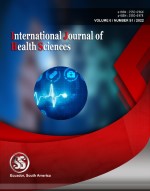Comparison of the effect of negative pressure wound therapy with topical insulin application on wound healing in diabetic foot wounds versus NPWT alone
Keywords:
Diabetic foot, Type II diabetes mellitus, topical insulin, NPWT, BWAT scoresAbstract
Introduction: Diabetic foot is an important and devastating complication of the Type II diabetes mellitus. This study was mainly undertaken to study the combination of NPWT along with topical insulin application and its effect on wound healing when compared to NPWT alone. Material and Methods: A prospective interventional study was undertaken in the Department of Surgery, Bengaluru. A total of 100 patients were divided equally between the two groups where one group received NPWT alone and another group received NPWT with topical insulin. The wounds in both the experimental and control groups were opened on the 7th, 15th and 30th day and compared using the BATES - JENSEN WOUND ASSESSMENT TOOL. The details were collected by using a predesigned proforma and analysed using Statistical Package for Social Services (SPSS ver 20). Results: Majority of the patients in both experimental and control groups were aged more than 60 years and were males. There was no statistically significant difference between the NPWT alone and NPWT with topical insulin groups.
Downloads
References
American Diabetes Association. Diabetes Facts and Figures, 2000, American Diabetes Association, Alexandria, VA, 2000.
Abbott CA, Carrington AL, Ashe H, North-West Diabetes Foot Care Study, et al. The North-West Diabetes Foot Care Study: incidence of, and risk factors for, new diabetic foot ulceration in a community-based patient cohort. Diabet Med. 2002; 19:377–84.
Huang C, Leavitt T, Bayer LR, Orgill DP. Effect of negative pressure wound therapy on wound healing. Current Problems in Surgery. 2014 Jul 1;51(7):301–31.
Scimeca CL, Bharara M, Fisher TK, Kimbriel H, Mills JL, Armstrong DG. Novel use of insulin in continuous-instillation negative pressure wound therapy as “wound chemotherapy.” J Diabetes Sci Technol. 2010 Jul 1;4(4):820–4.
Harris C, Bates-Jensen B, Parslow N, Raizman R, Singh M, Ketchen R. Bates-Jensen wound assessment tool: pictorial guide validation project. J Wound Ostomy Continence Nurs. 2010 May-Jun;37(3):253-9.
Stephen S, Agnihotri M, Kaur S. A Randomized, Controlled Trial to Assess the Effect of Topical Insulin Versus Normal Saline in Pressure Ulcer Healing. Ostomy Wound Manage. 2016 Jun;62(6):16–23.
Ramarao K, Ramu L, Comparative study between the effect of topical insulin and normal saline dressing in healing of diabetic foot ulcers. International Journal of Contemporary Medical Research 2017;4(6):1337-1339.
Goenka G, Athavale VS, Nirhale DS, Deshpande N, Agrawal K, Calcuttawala M. Role of topical use of insulin in healing of chronic ulcer. Med J DY Patil Univ 2014;7:579-83.
Published
How to Cite
Issue
Section
Copyright (c) 2022 International journal of health sciences

This work is licensed under a Creative Commons Attribution-NonCommercial-NoDerivatives 4.0 International License.
Articles published in the International Journal of Health Sciences (IJHS) are available under Creative Commons Attribution Non-Commercial No Derivatives Licence (CC BY-NC-ND 4.0). Authors retain copyright in their work and grant IJHS right of first publication under CC BY-NC-ND 4.0. Users have the right to read, download, copy, distribute, print, search, or link to the full texts of articles in this journal, and to use them for any other lawful purpose.
Articles published in IJHS can be copied, communicated and shared in their published form for non-commercial purposes provided full attribution is given to the author and the journal. Authors are able to enter into separate, additional contractual arrangements for the non-exclusive distribution of the journal's published version of the work (e.g., post it to an institutional repository or publish it in a book), with an acknowledgment of its initial publication in this journal.
This copyright notice applies to articles published in IJHS volumes 4 onwards. Please read about the copyright notices for previous volumes under Journal History.
















